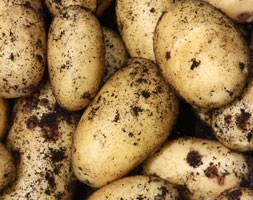New products at Crocus
by Sarah - May 15th, 2013.Filed under: Crocus, New Products.
Crocus has these new items today
Eremurus ‘Robustus’ (foxtail lily) £5.99
Position: full sun Soil: fertile, sandy, well-drained soil Rate of growth: average Flowering period: June and July Flower colour: dark yellow Other features: strap shaped, bluish green leaves Hardiness: fully hardy Soaring, slender spikes of dark yellow flowers in early and midsummer rising above strap shaped, bluish-green leaves. This spectacular foxtail lily is perfect for creating a bold statement in a sunny, well-drained border. It’s best partnered with other late spring flowering perennials and tall grasses which help to mask the plant’s short lived foliage. Foxtail lilies need to be planted in fertile but well-drained soil with the crown not far below soil level. They start to grow in late winter and spring, gathering their strength before they produce their towering flower spikes in summer. Each flower spike has hundreds of flowers which open from the bottom upwards, creating a stunning effect. They thrive in the sunniest spot in the garden, especially if the base of the plant isn’t shaded as this can decrease the number of flowering spikes produced. Garden care: In September every three to five years carefully lift and divide congested clumps. Replant the strongest crown on a layer of sharp grit, spreading out the roots and covering them with a thin (5cm/2in) layer of soil. In frost-prone areas cover with a dry mulch of fern leaves.
Phlox paniculata ‘Mount Fuji’ (border phlox (syn. Fujiyama )) £5.99
Position: full sun or partial shade Soil: fertile, moist, well-drained soil Rate of growth: average Flowering period: August to October Hardiness: fully hardy Phlox have always been country garden favourites for their delicious scent and attraction to butterflies and bees. This is a late-flowering variety with clusters of small, starry, fragrant, white flowers in August above dark green leaves. This pretty, long flowering perennial phlox will tolerate full sun or partial shade, but like all phlox, does not like soil that dries out in summer. Try it in the middle of a border, alongside the spikes of salvias or veronicastrums to extend the flowering season into autumn. Garden care: Support with bamboo canes, brushwood or ring stakes before the flowers appear. Phlox are greedy plants, so apply a mulch 5-7cm (2-3 in) deep of well-rotted garden compost or manure in early spring. Shear off the spent flowers to prevent reseeding. If the leaves show signs of powdery mildew , cut down to the ground and dispose of the affected foliage, but do not compost it. Clear away the debris around the plant to reduce the chances of reinfection. Cut down to the ground in autumn. Lift and divide large clumps in autumn or spring.
potato ‘Charlotte’ (seed potato for summer planting) £2.99
Position: sun-partial shade Soil: fertile, well drained Rate of growth: fast-growing Harvesting period: mid-late June Hardiness: protect tubers from frost ‘Charlotte’ is a very popular salad variety, which produces pear-shaped, yellow skinned waxy potatoes with creamy-yellow flesh. They are full of flavour and delicious either hot or cold. This variety also has high resistance to foliage and tuber blight. If you plant them in summer, you can begin to harvest your new potatoes in late autumn to Christmas. Garden care: There is no need to chit seed potatoes which are planted in summer, so just plant them straight out into trenches dug into a well-prepared bed about 30cm (12in) apart, or plant them into a potato grow-bag, making sure there is at least 20cm (8″) of compost beneath them. Add a general purpose fertiliser to the bottom of the trench or growbag and then cover the potatoes with a 20cm layer of soil or compost. Keep well watered, and as the plants get to around 20cm (8in) tall you need to bank up the soil around the plant, so the soil covers the bottom two thirds of the plant. Watering your plants well will help improve crop yield and discourage potato scab. It is important that the crop is protected from frosts and the crop should be ready to harvest in around 12 weeks.









